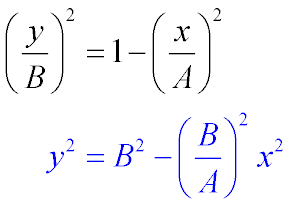- Computers are needed for lab this week
- The Lab Practical is in 3 or 4 weeks (depending on the year, there may be 2 or 3 weeks of classes after Thanksgiving); here's what you should tell them:
- They will have 3 hours to individually complete 4 experiments. Practice equipment will be made available after Thanksgiving break
- Smart phones may not be used as calculators or for listening to music
- Read through the Lab Practical Info document on the lab list page for skills to be tested. Here's what they'll have to do:
- KaleidaGraph: Given a set of data, create a graph, determine the best fit function, create a General fit to get uncertainties and SSR, create a residuals plot
- Practice materials available: Any public computer in the physics department (KaleidaGraph is not installed elsewhere on campus). Students can use one of the desktops in the lab, or borrow a laptop to use in the department (if one is available)
- Precise measurement: Know how to correctly measure an object using vernier calipers
- Practice materials available: Vernier calipers will be available in the lab
- Photogate usage: Photogate timers were used in many of the experiments performed, and we used all of the settings available. Students should know what each setting measures, and how to position a photogate to correctly measure the desired quantity
- Practice materials available: Photogate timer. Students will not need to use an accessory photogate as was used in the Conservation of Momentum experiment
- Proper usage of meter stick and calipers: Measure a large object with a 1-m or 2-m meter stick and a pair of calipers. They should know the correct procedure for recording the information (both caliper measurements!)
- Practice materials available: None. They should refer to their reports where meter sticks and calipers were used
- Students should review their lab reports and our documents for correct instrument usage (which they will find difficult if they've been writing crappy lab reports!)
- They will not need to write a report (or discussion) for each experiment, but they will need to briefly state what it is that they're calculating or measuring
- One air table is shared by everyone for today's experiment
- Run each group through using the air table to make sure they each have a good trace of spots and the correct direction of motion
- Keep the puck that is not connected to springs on the air table in the back left corner. This puck must be on the table so that it contacts the carbon paper underneath, completing the circuit and creating the spark.
- Have students practice the correct method of moving the puck in its orbit. The direction (CW or CCW) does not matter
- The must hold the puck near the base of its stem; if they hold it too close to the top, the puck tips, breaking the air cushion and digging in to the target sheet and carbon paper
- Use a gentle touch to move the puck around to prevent breaking the air cushion. "Like rubbing a baby's backside"
- Make sure student keeps their hand off the air table while Sparky is on!
- Leave the power switch for Sparky turned on, and have the students turn the knob from Standby to Spark On. They need to time it so that they get sparks for a complete orbit (a little overlap is fine)
- Note: Sparky is set to 15 counts per second. Be sure Sparky is
set to standby before turning the power on (the fuse might blow
if not in standby mode)
- Frequently (but not always), there is a noticeable 'wave' in the data. What's the cause? If you compare the peaks of the waves the pucks position around its orbit, sometimes (but not always!) the wave peaks occur when the puck is entering or exiting its apogee/perigee point. Are the springs pulling unevenly, creating a sideways torque? Possible, yet undetermined.
- The project is optional; it used to be a regular part of the experiment. Since it's only worth +1 point, it's usually an exam week and sometimes the week before break, few will bother trying. I'll give partial credit if they give a decent effort.
- Starting with the original equation for an ellipse, solve algebraically for y2. The resulting expression should form a straight line when y2 vs x2 is plotted, with slope -(B/A)2, and intercept B2.

|
